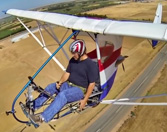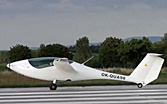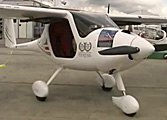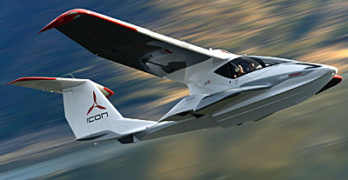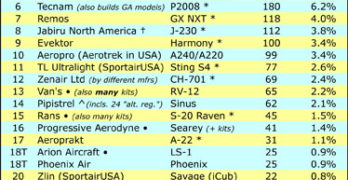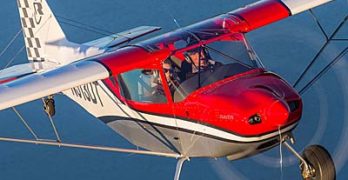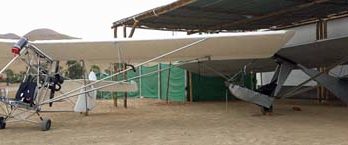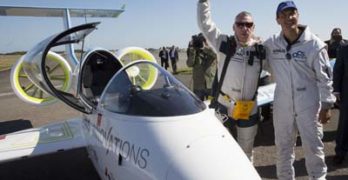Earlier this month, Light-Sport Aircraft celebrated a birthday. The date was September 1st, when FAA made the then-new Sport Pilot/Light-Sport Aircraft rule “effective” (to employ FAA-speak). So… happy birthday, LSA.
In those dozen years — the newest aircraft segment is not even a teenager yet — quite a bit has changed. If you are a parent, you may not notice your child getting older as you see them daily. However, the distant uncle or grandparent who only gets to visit infrequently may be astounded how much the little guy or gal has grown. I suspect those close to LSA may have a similar perspective deficit, so let me make some contrasts.
The nearby images are from a talk I gave at the recently concluded Mid-West LSA Expo. I went into more detail than this article permits but I’ll bet you get the points.
AIRFRAMES — Today, we accept that we have some marvelous, sleek, high-tech, well-equipped, well-performing models.
Search Results for : motorglider
Not finding exactly what you expected? Try our advanced search option.
Select a manufacturer to go straight to all our content about that manufacturer.
Select an aircraft model to go straight to all our content about that model.
Adventure Aircraft — Electric Motor Glider
Adventure Aircraft may be a new name but you may know the man behind it. He’s Brian Carpenter and with his wife and partner Carol has become the primary source for classes leading to attendees becoming LSA Repairman. In whatever spare time that allows, Brian has been working on the aircraft featured in this video. This is a pure-electric-powered motorglider in one and two seat options. As a one-place EMG it can qualify as a Part 103 ultralight vehicle; with two seats it must be Experimental Amateur Built. Watch for more info.
Phoenix Air — electric ePhoenix (2013)
We know the elegant Phoenix, a sleek motorglider that also enjoys flying powered cross country flights (more on an especially long flight in another video). At Aero 2013 we had a chance to visit with Martin Stepanek about Phoenix Air’s pure-electric aircraft called the ePhoenix. Martin helps us understand the details of electric power in a modern, efficient Light-Sport Aircraft.
Pipistrel — Virus SW (2010)
Pipistrel, headquartered in Slovenia with U.S.-bound manufacturing done in nearby Italy, has a line of interesting models. In this video we examine the Virus SW, for Short Wing. We’ve previously reviewed the long wing version and the Sinus motorglider. In addition this company makes a powered sailplane and they started with weight shift trikes. Pipistrel has also distinguished itself with a string of victories in NASA efficiency contests, more recently winning an astounding $1.3 million.
Will Third Class Medical Reform Hurt LSA?
One of the most common questions I got at Oshkosh 2016 was the title of this article. I’m only one person with an opinion, but since I work with many airframe producers in the LSA space, I heard this question fairly often, several times from airplane sellers who were curious what other producers thought.
Just shy of five years ago, EAA and AOPA caught the LSA industry off guard by announcing plans to push FAA to drop the Third Class medical. Most LSA professionals likely agree with the basic idea that FAA ought to keep their noses out of the recreational end of aviation. Many feel that the medical requirement has prevented almost no accidents. Nonetheless, this new initiative took aim at the primary reason LSA builders were then selling airplanes like crazy. If you wanted to fly without a medical you had ultralights (Part 103… and still do), or sailplane motorgliders, or Light-Sport Aircraft.
SLSA Market Shares Report & Commentary for 2015
Article Updated 8/8/16 — The second chart appearing below for Calendar 2015 results had errors in the spreadsheet formula. They have been corrected below. —DJ
My associate in Europe, Jan Fridrich of LAMA Europe, has been the source for a database search for many years as I seek to report market share statistics in the USA. He scours the FAA registration information and laboriously assembles the numbers. As he and I work to produce accurate info, Jan often makes contact with selected companies when questions arise, as they often do. I also reach out to producers in our effort to make the best possible use of the registration data to create our rankings.
Jan has been one of his country’s representatives in the Czech Republic’s official work with the Chinese to help that nation build its lighter aviation infrastructure. He’s made many trips to China in the last two years.
Newest Special LSA Is … Rans’ S-20 Raven
The world of Light-Sport Aircraft has matured in the sense that we no longer have an airplane or two or three every month being added to the SLSA List. That may sound like a “industry slowdown” to some folks but I don’t believe that’s an accurate assessment.
A more realistic view is that the feverish rush days of 2004-2006 are over. That means not as many new SLSA are being offered though the truth is many of those 137 aircraft never found a substantial market.
Indeed, our market share list of SLSA airplanes shows the top 20 brands represent better than 85% of all sales. Regretfully, our ranking shows only airplanes as we are unable to pull good data from FAA’s database for motorgliders, weight shift trikes, powered parachutes, and other “alternative” aircraft.
All that said, I am pleased to announce one of our most solid companies — Rans — continues to introduce new airplanes like their S-20 Raven and to qualify them to be accepted by FAA as a fully-manufactured Special Light-Sport Aircraft.
Glowfly Update; Clever Name—Clever Project
What’s in a name? I like Glowfly, as a sort of double entendre. It could suggest “Go fly,” or it might refer to glow as in the spark employed to start a turbine engine. Yup, in case you didn’t see our earlier article by Dave Unwin, the newly renamed Glowfly is a jet-powered sailplane that uses electric-powered main wheel propulsion to assist. How’s that for — as my favorite British comedy troupe, Monty Python, used to say — “something completely different?”
Formerly called GloW (which nearly everyone was sure to misspell; certainly your smarty-pants smartphone would never get the capitalization right), Glowfly is moving along smartly. Here’s an update the folks at ProAirport sent along.
“The first public reveal — Project Glow becomes Glowfly,” glowed the ProAirport team.
In the last weekend of November at the Flyer Live show, ProAirport said, “We were overwhelmed by the number of visitors to the ProAirsport stand. It was truly fantastic to meet and talk to all these extremely interested people who had made a beeline for us after hearing and reading all about Project Glow [the project’s earlier name].” They reported that many interested pilots specifically came to see Glowfly live, as the show name suggests.
What Will 15 Days and $15,000 Get You?
This website focuses on the affordable end of aviation. However, “affordable” is a relative term. I’ve written about Icon’s A5, which may set the bar highest among Light-Sport Aircraft at around $247,000 for a well-equipped LSA seaplane. (See our Video Pilot Report.) If you had the money would you buy an A5 or a Cessna 172 Skyhawk for around $400,000. You probably have a response but then, the question is rhetorical because most readers likely don’t have a quarter-million to do drop on a LSA, no matter how magnificent it may be.
I’ve also written about the $16,000 (or so) fully-built Aerolite 103. Some think that’s a wonderful deal on a very nice single seat airplane. Yet at least one person wrote on my Dan Johnson Media / Affordable Aviation Facebook page that even Aerolite is too expensive. Fair enough. We all have different budgets.
Racing Down Electric Avenue … Here Comes Airbus
At the recently concluded Palm Springs Expo, a keynote address was provided by George Bye, the man behind the Sun Flyer project that aims to put electric two seaters into flight schools. Pipistrel is already selling into this market with its Electro (video) and while only a small number of aircraft are in use, the race is on for more … much more.
Airbus made big news back in July when a race developed to see who would cross the English Channel first in an electric powered airplane. Of course, the whole thing was a bit moot because it had been done years before. Longtime electric pioneer Eric Raymond of Sunseeker Duo noted, “It was already done in 1981 by the Solar Challenger, which flew from Paris to London at 14,000 feet. [Famous hang glider pilot and manufacturer Gerard] Thevenot even flew an electric trike across.
- « Previous Page
- 1
- …
- 7
- 8
- 9
- 10
- 11
- …
- 23
- Next Page »



